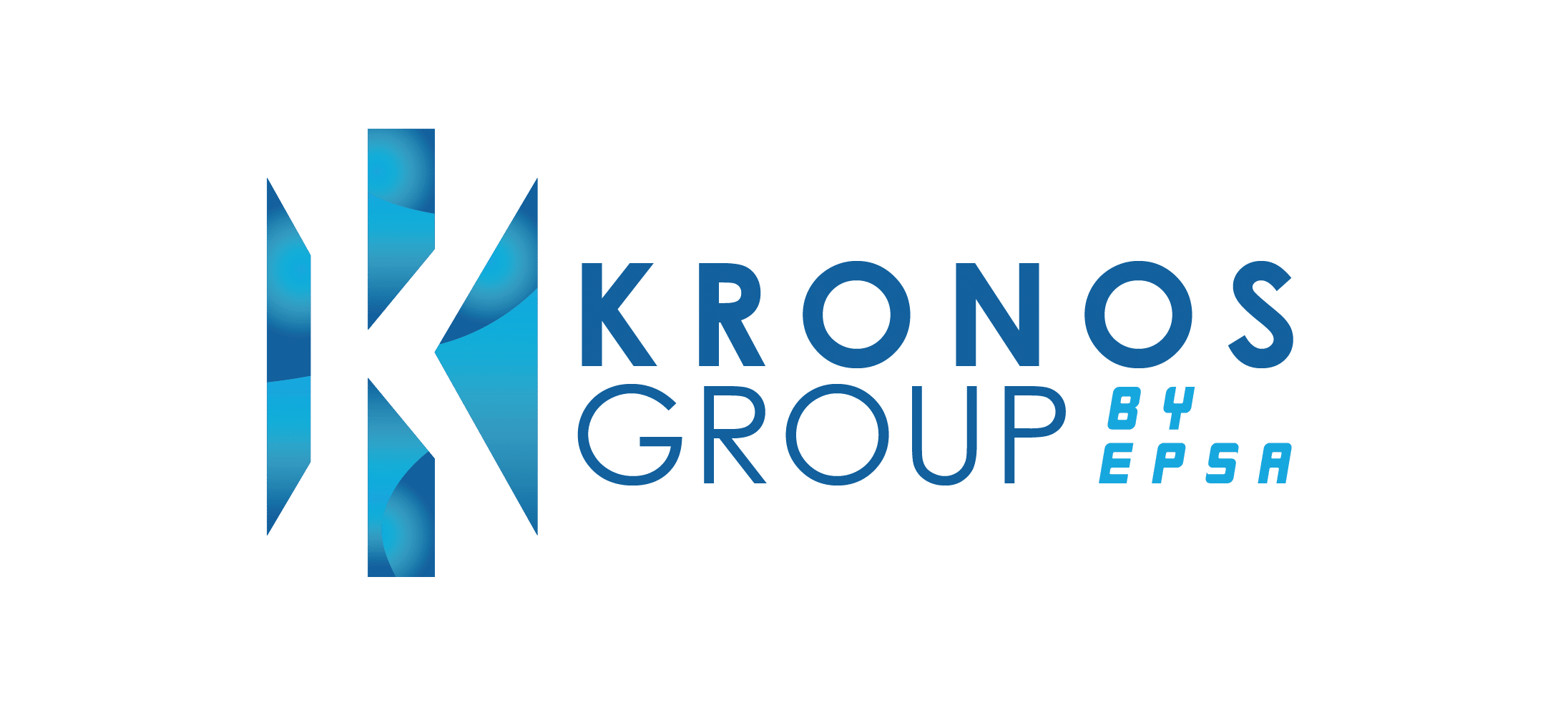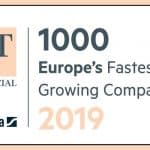How to overcome internal sourcing shortcomings through a procurement contract process?

Summary
In today’s fast-paced business environment, having a strong sourcing contract process is essential for successful transactions. It sets clear expectations between buyers and suppliers, promotes transparency, and minimises risks.
Internal challenges of the procurement process include unclear requirements, inadequate risk management, and lack of supplier monitoring can hinder efficiency and lead to costly mistakes. A well-defined procurement contract process is crucial in addressing internal shortcomings to overcome these obstacles by prioritising clear communication, stakeholder engagement, and robust risk assessment frameworks.
The benefits of adopting a procurement process towards organisational success result in improved communication, mitigating risks, controlling costs, ensuring compliance, and driving greater value from procurement activities. The key components of an effective contract process lay the groundwork for successful business transactions and the governance of stakeholder relationships.
The importance of a strong procurement contract process cannot be overstated in today’s business environment. Procurement contracts lay the groundwork for successful business transactions, governing the relationships between buyers and suppliers and outlining the terms, responsibilities, and expectations involved.
A well-defined sourcing contract process promotes transparency, minimises risk, and encourages accountability throughout the procurement lifecycle. Organisations can mitigate risks, optimise costs, and enhance value creation by establishing clear guidelines for vendor selection, negotiation, and performance evaluation. Essentially, a robust sourcing contract process is crucial for protecting organisational interests, ensuring compliance, and maximising the effectiveness of procurement activities.
Organisations frequently face internal obstacles that can hinder efficiency, impede collaboration, and undermine the achievement of strategic goals. These internal challenges encompass various aspects of the procurement process, ranging from inadequate interdepartmental communication to unclear project requirements. Such challenges often result in delays, exceeding costs, and missed opportunities for value creation.
However, by acknowledging these common pitfalls and implementing effective strategies, organisations can overcome internal barriers and unleash the full potential of their procurement functions. In this article, we will explore the prevalent internal deficiencies encountered during procurement and examine practical approaches to address them, empowering organisations to streamline processes, enhance collaboration, and drive sustainable success.
What are the internal challenges of the procurement process?
Organisations that prioritise overcoming these challenges can enhance operational efficiency, mitigate risks, and drive greater value from their procurement activities. While procurement practices serve as instruments that identify and eliminate substandard suppliers or new opportunities to increase efficiency, they cannot proceed effectively without supplier monitoring in place.
- Lack of clarity in requirements: One common and constant challenge in procurement is the lack of clear requirements. When project requirements are ambiguous or poorly communicated, it can lead to misunderstandings, scope creep, and ultimately, dissatisfaction with the delivered product or service. Data has shown that 86% of process downfalls are due to the lack of clarity in communication, whereas 97% of employees believe that communication has a strong impact on processes and business functions. Communication breakdowns between all the departments in the organisational hierarchy tend to hinder process functions and collaboration, delay decision-making, and increase the risk of errors or oversights.
- Inadequate risk management: Effective risk management is essential in procurement. Research shows that 41% of businesses have witnessed and experienced three or more critical risk events in the past few years which saw a pandemic and cascading economic volatility. Risk management requires identifying, assessing, and mitigating potential risks that could impact timelines, budgets, or quality standards. Failure to adequately manage risks can lead to procurement or sourcing delays, cost overruns, and reputational damage.
- Lack of supplier performance monitoring: Monitoring and evaluating supplier performance is critical for ensuring that contractual obligations are met, quality standards are maintained, and value for money is achieved. However, without robust procurement processes in place for stakeholder performance monitoring, organisations risk overlooking underperforming suppliers or missed opportunities for improvement.
Internal shortcomings require a combination of proactive measures, including clear communication channels, stakeholder engagement, risk assessment frameworks, and performance monitoring mechanisms
Why having a well-defined procurement contract process is crucial in addressing internal sourcing shortcomings?
Internal frictions need passive measures and also active ones such as effective communication, stakeholder engagement, risk management framework and performance monitoring mechanism. Those business units that manage these difficulties well, do better when it comes to system efficiency, risk management, and procurement.
- Clarity and alignment: By laying out the sourcing contract process in a structured way, all stakeholders have ample chances to know in depth about project requirements, objectives, and expectations. Organisations can achieve this goal by clarifying the roles, responsibilities as well as deliverables in the beginning. This allows teams to understand each other in case of any misunderstandings and work together to achieve common goals with minimum risk of being in conflict or confusion.
- Risk management: Render a contract process by assessing and managing risks, allowing organisations to spot and minimise risks in the early stages of the procurement cycle. Through the continual assessment of risks resulting from suppliers’ performance, the fulfilment of contractual obligations, and the dynamics of the market, organisations will be able to act proactively to mitigate the risks and protect the business from the interruption of processes.
- Compliance and legal protection: A procurement contract is a binding document regarding the rights and responsibilities of parties in a transaction. A properly structured sourcing contract process helps in meeting the common compliance protocols, standards, and policies both at the industry level and within the organisation, diminishing legal issues and liabilities. By purely outlining the terms and conditions, organisations could build a strong legal framework that properly protects their interests and reduces their exposure to disputes and litigations.
- Cost control and efficiency: Efficient and effective procurement contracting procedures make it possible for organisations to negotiate the best terms, ensure budget efficiency, and establish mutually beneficial partnerships with vendors. Standardised contract templates, approval workflow automation, as well as performance metrics implementation can greatly facilitate operational efficiency, help curb procurement spending and ultimately result in cost savings across the entire procurement process.
- Performance monitoring and improvement mechanisms: The mechanism for ongoing performance monitoring, evaluation and continuous improvement is included in the structured sourcing contract process. Organisations can assess the performance of suppliers, identify areas for improvement and drive greater value creation over time by monitoring key performance indicators, conducting supplier audits and seeking feedback from stakeholders.
By promoting clarity, mitigating risks, ensuring compliance, optimising costs and encouraging continuous improvement, a well-defined sourcing contract process is a cornerstone for addressing internal shortcomings. An organisation may succeed in overcoming challenges and fully exploit the potential of its procurement functions through the implementation of standardised processes, transparent communication channels and robust management frameworks.
What are the benefits of adopting a procurement contract process towards organisational success?
Improved communication
All stakeholders can effectively communicate in the case of well-outlined organisational positions, duties, and expectations which in turn reduces miscommunication and conflicts. By clearly outlining expectations for each party in terms of their duties and responsibilities, confusion and misinterpretation is lessened. The delineation of the work responsibilities within the procurement team, the project managers and the solicitor advisors provides a clear picture of who is accountable for what activity. This leaves no room for misinterpretation and this allows for easier collaboration and higher efficiency, contributing towards achieving better results.
Transparent operations as well as open communication build a basis of trust and partnership that bridge internal and external parties. Through conducting peer-education activities, individuals connect to a network of support in which they can ask questions openly and with confidence that their concerns will be addressed ethically. For instance, disclosing the criteria to suppliers, or giving them the chance to be a part of contract negotiations, helps maintain confidence among stakeholders.
Transparency in the provision of the procurement initiatives also promotes appropriate inputs as well as suggestions by all parties, thereby resulting in better, more informed decisions.
Efficient communication channels and compatible workflows will keep this process on track resulting in clarity and timelines to allow for optimal decision-making and problem-solving.
When communication flows smoothly, obstacles are minimised and pending tasks are kept to a minimum. For example, making information available through an automated notification system for approval requests or setting up regular meetings to report on the state can keep key people in the loop. Communication in time further enables organisations to be flexible in making changes and also reduces the risk of disruptions for processes to run smoothly.
Risk mitigation
Structured processes make the process of risk assessment have a systematic approach and this makes organisations able to detect and prioritise potential risks. The creation of a system for risk identification that clearly defines the procedures, or guidelines, for taking a deeper look at procurement project areas such as supplier reliability, market volatility, and regulatory compliance is a step towards a more stable and secure future of any organisation. This is the kind of solution that allows one to immediately identify potential risks in the roadmap of a procurement project. This makes it possible to create a targeted mitigation strategy and make resources available to solve critical risks.
Thorough risk assessment makes it possible for organisations to realise the probability of risks and the effects of those risks. Investigating risk assessment and evaluation processes closely will help organisations build up a knowledge base on the actual impact that the risk of various factors has on project goals, timeframes, and budgets. The probability and the impact will be the parameters by which the likelihood and seriousness of the risk events are assessed and the response to the efforts of stakeholders can be prioritised and resources allocated. Through the means of risk assessment, organisations can make informed decisions about whether to accept, avoid, share, or mitigate, correcting the risk by accepting more uncertainty and improving their capability to effectively manage.
From using contract clauses and going through contingency plans to the process of supplier diversification, various proactive risk actions, aiming to reduce risks and their impact, are reviewed by the organisations. Such a range of actions eventually safeguards the environment from disruptions. Organisations can take on information from risk assessment and evaluation and subsequently create targeted risk mitigation strategies to match specific threats and tackle the vulnerabilities. This could include reaching mutual terms and conditions in the contract that will proportionally distribute the risk among parties, creating backup plans to help respond to other events that are not expected, and striving for numerous sourcing companies so that one is not dependent on one supplier. With organised and targeted prevention measures, organisations can have a better risk status and getting the expected result of procurement projects will be easier.
Strategies that can be adopted to cope with better risk management:
- Identify risks: Conduct comprehensive risk assessments to identify potential threats and vulnerabilities associated with procurement contracts, considering factors such as supplier reliability, market volatility, and regulatory compliance.
- Assess risks: Evaluate the likelihood and impact of identified risks to prioritise mitigation efforts and allocate resources effectively.
- Mitigate risks: Implement proactive risk mitigation measures such as contract clauses, contingency plans, and supplier diversification to minimise the adverse effects of risks and safeguard against disruptions.
- Monitor and review: Continuously monitor and review risks throughout the procurement lifecycle, adjusting mitigation strategies as needed to address emerging threats and changing circumstances.
Cost control
Comprehensive contact agreements and protocols of negotiation that are standardised will give organisations the freedom to bargain more favourable terms with suppliers, thus cutting costs and consolidating gains. Pre-defined contract templates that are intended to capture the main terms and conditions of such transactions make it possible for organisations to shift the emphasis of negotiations and ensure uniformity. Supplier negotiation protocols serve as a baseline for procurement functions giving professionals a solid foundation to build cost savings, attractive payment terms and performance enhancements. By way of efficient negotiations, organisations can realise the best pricing and enable procurement contracts to become more of the value proposition.
Risk evaluation involves comprehending all risks that may potentially happen. These risks are measured in terms of how probable they are and what the effect is on the organisation. Risks that may affect a business or an organisation can be well considered by taking these risk-preventive measures. By conducting in-depth investigation and appraisal, organisations get a better insight into the possible negative impact of each risk and its effect on goals, timeframe and expenses. The risk assessment procedure allows for the prioritisation of actions by calculating the level of possibility and importance of the outcome as a result of each identified risk, thus the stakeholders can orient their responses and allocate resources according to this. Through this, the organisations can understand what type of risk they are ready to accept whether this is avoidance, sharing with an insurer or mitigating it, thus empowering them to deal well with uncertainty.
Instead of solely pointing out problems, proactive risk mitigation measures such as contract clauses, contingency plans, and supplier diversification help organisations reduce risks and ensure that they are well prepared for the adverse effects of risks. Equipped with the information supplied by the assessment of threat and evaluation processes, decision-makers can design tailor-made risk mitigation strategies that will be targeted at each particular hazard.
Legal compliance
The regulated procurement systems prevent breaches of the law, regulations and contractual liabilities, bringing down a sense of legality and improving performance. Organisations can develop transparent procurement rules and regulations to achieve this. As such, loyalty to the organisation’s regulations acts as a bulk wall for any legal litigation, fines, and penalties for lack of adherence.
A good record keeping of procurement transactions (such as contracts, amendments, and approvals) is done to provide a clear trail of audit-proof and legal protection for litigations or disputes in the future. Having a wide dissemination database of procurement activities at any time allows organisations to prove transparency, accountability or due diligence to anyone. In case assistance is required due to cases of legal challenges or contractual disputes the paperwork is often used as a basis of evidence of the company’s position and protection of its rights. To add to that, there also exists sufficient record keeping in the procurement procedure that intensifies the level of internal audit, examinations by regulatory bodies and performance planning procedures at the organisational level.
Strong governance frameworks and compliance controls reinforce principle deployment across all procurement systems at the same time. Governance structures, including policies, processes and overseeing mechanisms, serve to make sure procurement is carried out in line with the standards and principles previously prescribed. Such a promotion ensures that the agency is safeguarded from malpractices such as fraud, corruption and conflicts of interest. This helps in maintaining a good reputation and financial integrity. In addition, it is through developing a compliance and ethical culture that an effective regulatory environment establishes trust among stakeholders, improving the organisation’s position in the organisational environment.
In conclusion, a structured procurement contract process offers multifaceted benefits, including improved communication, risk mitigation, cost control, and legal compliance. By implementing standardised processes, transparent communication channels, and robust governance frameworks, organisations can optimise their procurement operations, enhance stakeholder satisfaction, and drive sustainable business success.
What are the key components of an effective procurement contract process?
Clear requirements definition: Clearly defining project requirements is paramount to prevent misunderstandings and scope creep during procurement. Without clear specifications, there’s a higher risk of selecting inappropriate suppliers or receiving unsatisfactory deliverables.
Tips for requirement analysis:
- Engage stakeholders early: Involve end-users, project managers, and other relevant parties to gather comprehensive requirements.
- Use structured techniques: Employ methods like brainstorming sessions, interviews, and surveys to elicit requirements effectively.
- Document extensively: Maintain detailed documentation of requirements, including functional and non-functional specifications, to serve as a reference throughout the procurement process.
- Prioritise requirements: Identify critical requirements versus nice-to-have features to focus procurement efforts and resources effectively.
Cross-functional collaboration: Collaboration between procurement, legal, finance, and operational teams is crucial for ensuring alignment of objectives, compliance with regulations, and optimal decision-making.
Strategies for collaboration:
- Establish cross-functional teams: Form interdisciplinary teams with representatives from each department to facilitate communication and collaboration.
- Define roles and responsibilities: Delineate the responsibilities of each department in the procurement process to avoid duplication of efforts or conflicts.
- Regular communication channels: Schedule periodic meetings or use collaborative tools to facilitate information sharing and decision-making across departments.
- Foster a culture of collaboration: Encourage open communication, mutual respect, and shared accountability among team members to promote a collaborative working environment.
Amidst the complexities and challenges, leveraging the expertise of a procurement consultant can be invaluable
Procurement consulting plays an essential role in helping companies to cope with the ever-changing market situation. These consultants provide firms with the necessary tools such as the use of procurement contract processes and strategies for rapid and effective adaptation to market changes through their wealth of expertise and insight.
Businesses can improve their procurement management practices, assess performance indicators, recast vendor partnerships and develop agile procurement strategies through collaboration with procurement advisory firms. These initiatives will allow businesses to prosper under the complex circumstances of today’s business environment.



